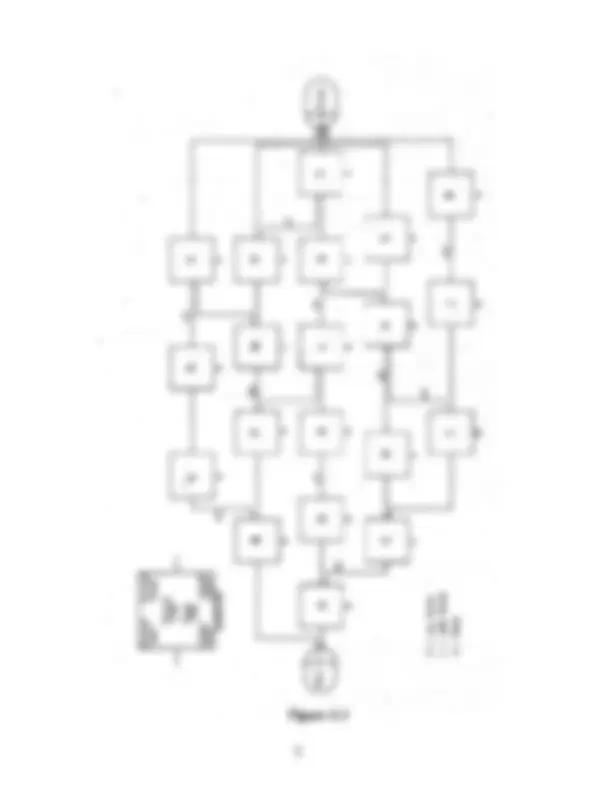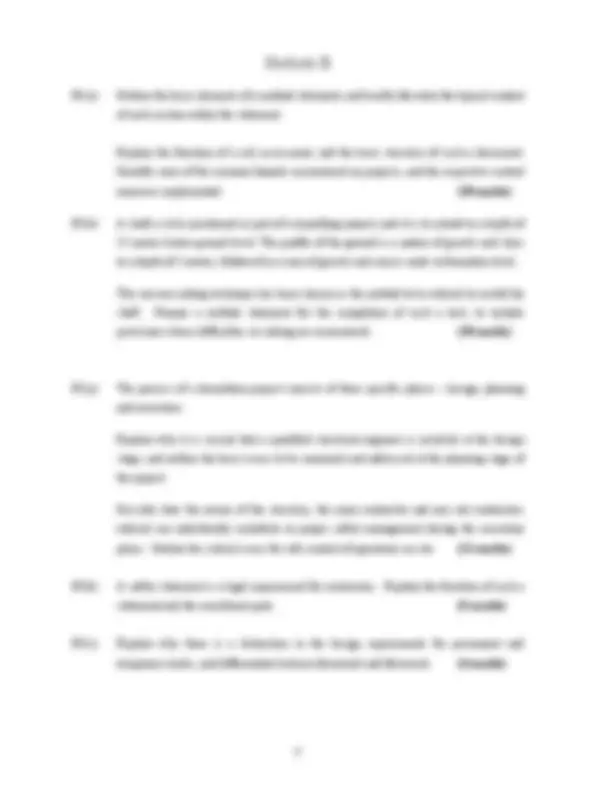




Study with the several resources on Docsity

Earn points by helping other students or get them with a premium plan


Prepare for your exams
Study with the several resources on Docsity

Earn points to download
Earn points by helping other students or get them with a premium plan
Community
Ask the community for help and clear up your study doubts
Discover the best universities in your country according to Docsity users
Free resources
Download our free guides on studying techniques, anxiety management strategies, and thesis advice from Docsity tutors
Main points of this past exam are: Pre-Construction Stage, Selective Tendering, Restrictive Tendering, Public Procurement Legislation, Time and Cost Over-Runs, Construction Project, Tasks of Project Manager, Award Criteria
Typology: Exams
1 / 4

This page cannot be seen from the preview
Don't miss anything!



(NFQ – Level 8)
Instructions Answer four questions from Section A. Answer both questions from section B. Use separate answer books for each Section.
Examiners: Mr D Cadogan Mr. L O’Driscoll Mr. T Corcoran Prof P O’Donoghue
A1(a) Change management is an important element of reducing time and cost over-runs in a construction project. Discuss how change management can be conducted effectively during a project. (5 marks)
A1(b) Explain the main tasks of a project manager during the “Pre-Construction Stage” as detailed in the CIOB Guide to Project Management. (5 marks)
A1(c) A project manager needs to be proactive. Discuss. (5 marks)
A2(a) What is the difference between restrictive and selective tendering as set out in EU Public Procurement Legislation? (4 marks)
A2(b) Explain the following terms in relation to Public Procurement:
(i) Prior Indicative Notice (2 marks)
(ii) Award criteria (2 marks)
A2(c) Explain how financial risk may be managed in a systematic way in a construction project. (4 marks) Discuss the advantages and methodology of a risk register, when managing this risk. (3 marks)
A3(a) What are the advantages of an ISO 9000 quality system for an engineering design firm? (4 marks)
A3(b) Explain the following terms in relation to ISO 9000, and how they relate to an engineering design firm: (i) Customer Focus (2 marks) (ii) Document Control (^) (2 marks) (iii) Quality audits (2 marks)
A3(c) The concept of “Alternative Dispute Resolution (ADR)” for construction projects has gained popularity in the last number of years. Give two examples of ADR, the procedure used for both, and the advantages of these methods over traditional methods of dispute resolution. (5 marks)
A4(a) Explain how a weighting system may be used to compare alternatives for a value engineering assessment of feasible route corridors during the road planning process. Use examples to explain your answer. (5 marks)
A4(b) Explain the difference between the “Creative” and “Analytical” stages of the value engineering process. How are these techniques used to give value for money for construction projects? (5 marks)
A4(c) How is Partnering used as a method of managing construction projects? (5 marks)
A5(a) What are the advantages of the Critical Path Method (CPM) of programming over Line- of-Balance Method? What situations are each of these methods best suited for? (3 marks)
A5(b) Analyse the Precedence Diagram in Figure A1, showing early start, early finish, late start, late finish and total float for each activity. Show the critical path on the diagram. (8 marks)
A5(c) Sketch a bar chart of this programme. Show free float for each item, based on activities beginning at the earliest possible time. Omit links from the chart. (4 marks)
B1(a) Outline the basic elements of a method statement, and briefly illustrate the typical content of each section within the statement.
Explain the function of a risk assessment, and the basic structure of such a document. Identify some of the common hazards encountered on projects, and the respective control measures implemented. (10 marks)
B1(b) A shaft is to be positioned as part of a tunnelling project, and it is to extend to a depth of 25 metres below ground level. The profile of the ground is a matrix of gravels and clays to a depth of 5 metres, followed by a mix of gravels and course sands to formation level.
The caisson-sinking technique has been chosen as the method to be utilised to install the shaft. Prepare a method statement for the completion of such a task, to include provisions where difficulties in sinking are encountered. (10 marks)
B2(a) The process of a demolition project consists of three specific phases – design, planning and execution.
Explain why it is crucial that a qualified structural engineer is involved at the design stage, and outline the basic issues to be examined and addressed at the planning stage of the project.
Describe how the owner of the structure, the main contractor and any sub-contractors utilised can individually contribute to proper safety management during the execution phase. Outline the critical issues for safe control of operations on site. (11 marks)
B2(b) A safety statement is a legal requirement for contractors. Explain the function of such a statement and the constituent parts. (5 marks)
B2(c) Explain why there is a distinction in the design requirements for permanent and temporary works, and differentiate between formwork and falsework. (4 marks)